
[317] Solanum dulcamara, Bittersweet Nightshade
Introduction
Solanum dulcamara, Bittersweet Nightshade, is a common and widespread wildflower with attractive blue and yellow flowers. It has several other common names including Bittersweet, Climbing Nightshade, Poisonflower, Poisonberry, Trailing Bittersweet, Trailing Nightshade and Woody Nightshade.
Some other species of Solanum are also called Nightshades as is the less common Deadly Nightshade, Atropa belladonna, a related species from the family Solanaceae.
I will consider the whole genus Solanum but will defer three important species until tomorrow. Most parts of all species, including unripe fruits, are poisonous to humans (but not necessarily to other animals.)
Taxonomy
Kingdom – Plants
Division – Vascular Plants
Class – Angiosperms (Flowering Plants)
Order – Solanales
Family – Solanaceae
Subfamily – Solanoideae
Tribe – Solaneae
Genus – Solanum
Subgenus – Solanum
Section – Dulcamara
Scientific Name – Solanum dulcamara
Name
Nightshade is derived from night-shade, but I don’t know why.
Solanum has been used as a Latin Name for a close relative (probably Solanum nigra) since the First Century AD, but its derivation is unknown. It may come from the Latin Sol – the Sun.
In Latin the dried branches of the plant were called dolcamara from dolce-amaro, ‘sweet-bitter,’ because of its medicinal uses.
Note that dolcamara has a feminine ending, while solanum is neuter. The feminine form of the adjective dolcamarus was used as a noun in apposition. See Names.
Description
Bittersweet Nightshade is a small, scrambling plant that can grow to a small bush but often climbs through and over other plants.
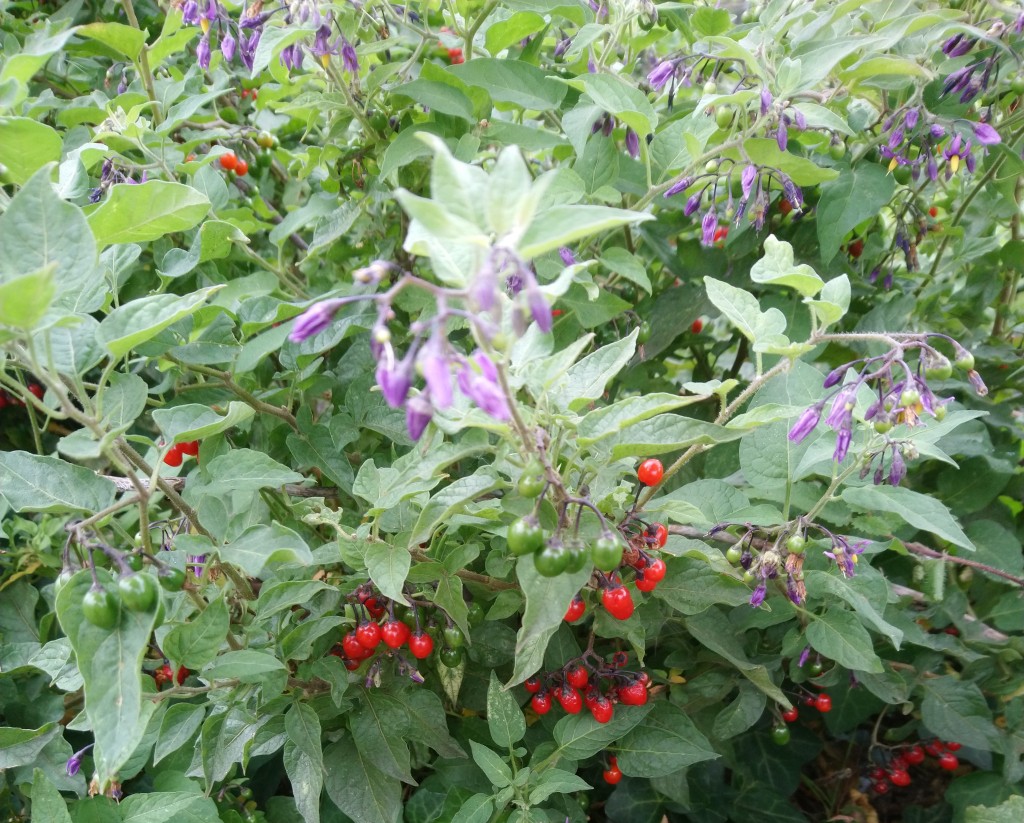
Its leaves are roughly arrow-shaped, often lobed at the base.
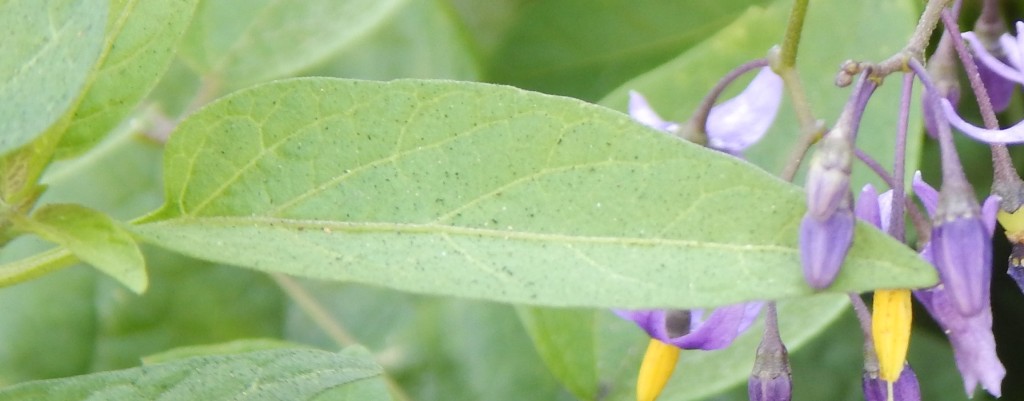

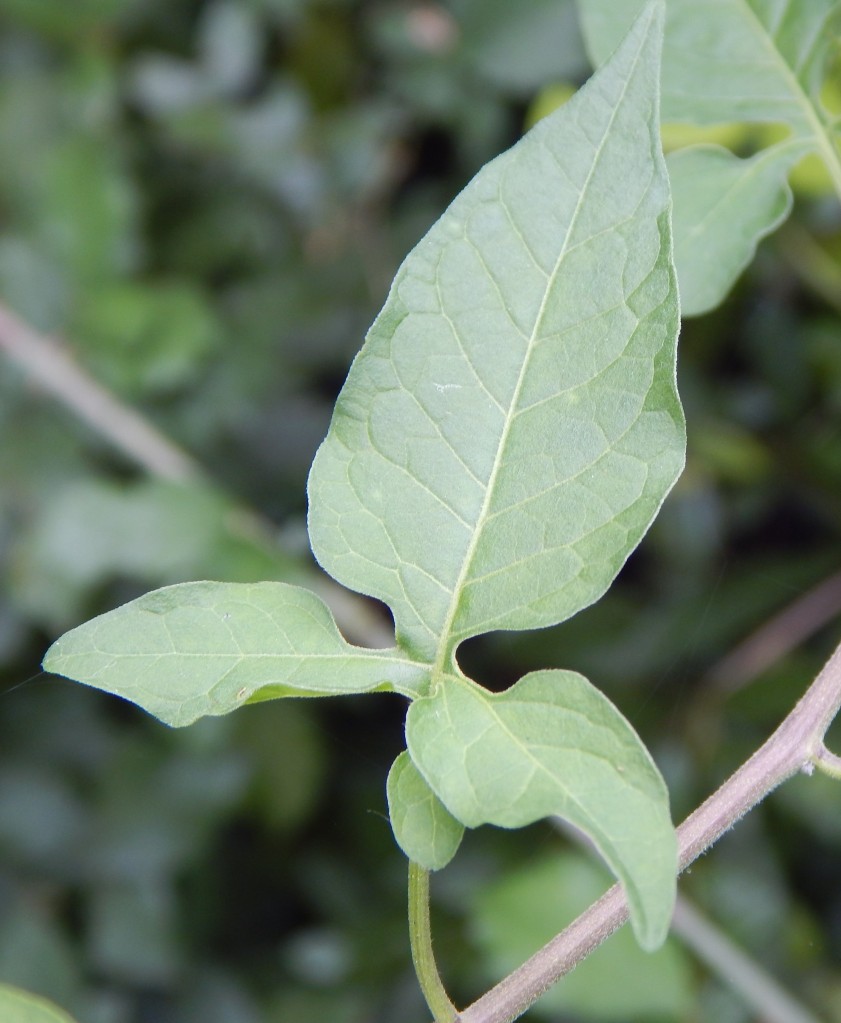
Flowers, coming in loose groups, are small, star shaped and purple (or dark blue) with prominent yellow central stamens and style.


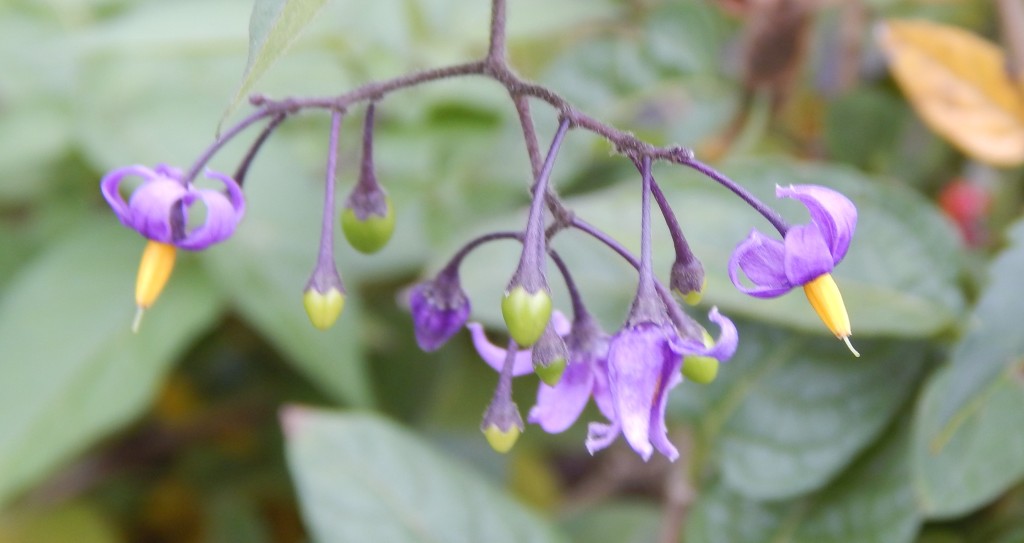
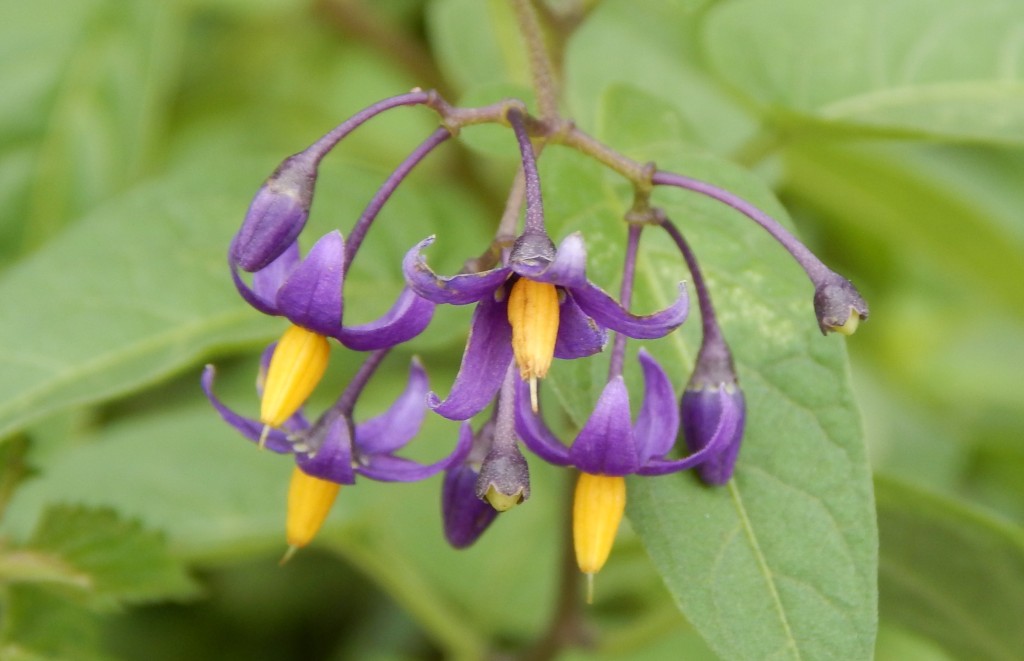
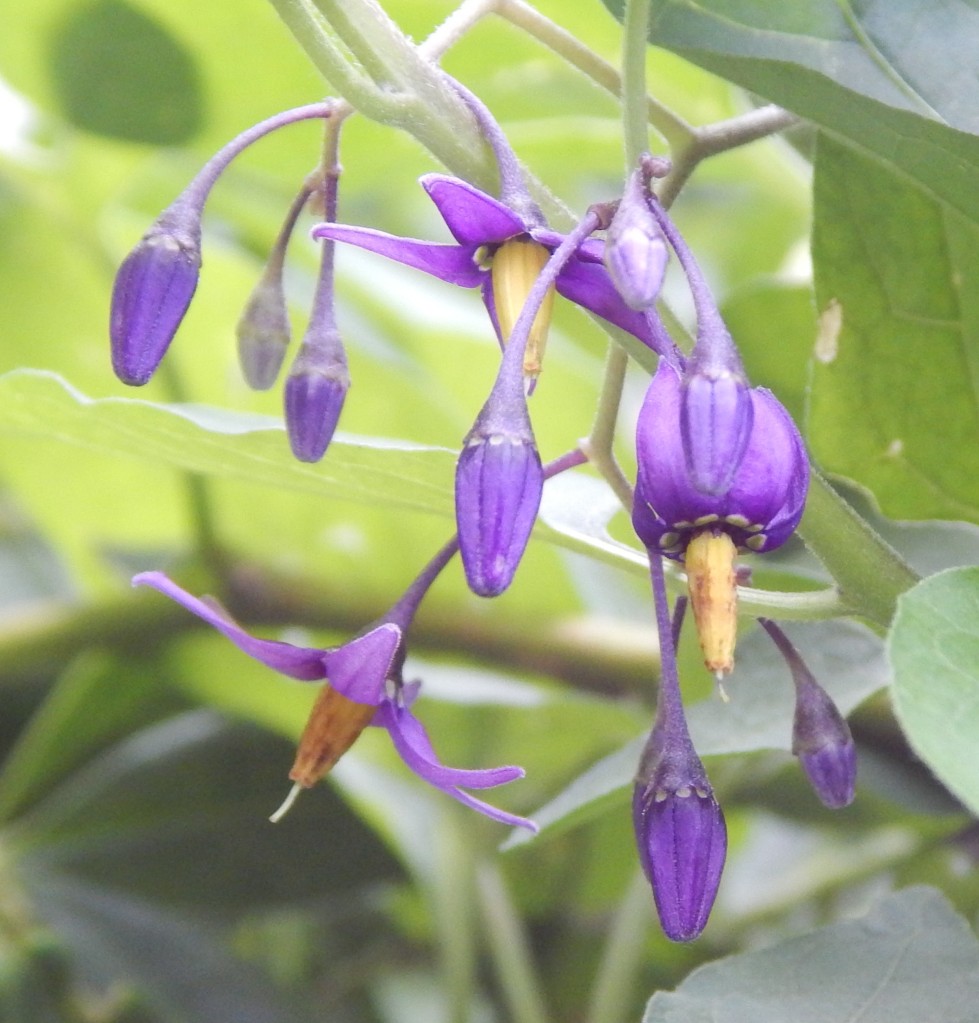



The fruits are small, slightly ovoid berries looking like tiny tomatoes – green at first, turning red. They are poisonous to humans and livestock but not to some birds.




You may see buds, open flowers and fruits of all colours at the same time near to each other.

The very large genus Solanum includes a variety of forms – annuals and perennials, shrubs and small trees, and some climbing plants (called vines in America.)
Habitat and use
Solanum dulcamara is native to Europe and much of Asia and has spread and naturalized over most of the World. It grows in many environments, especially wetlands and under trees near rivers.
It has been used in native herbalism since the Ancient Greeks. I have given up listing what herbal remedies used to be used for because many of them seem to have been used (rightly or wrongly) for almost everything.
A few of the nearly two thousand species of Solanum are cultivated as garden plants. I will consider three important species of Solanum tomorrow.
Other Notes
This species is widespread in the UK but may not be spotted because of its low-growing nature and small flowers. But when you do notice it, its purple and yellow flowers make it an attractive wildflower.
See also
For those of you who don’t know already, I will leave the identification of three more species of Solanum until tomorrow.
They may come as a bit of a surprise.
